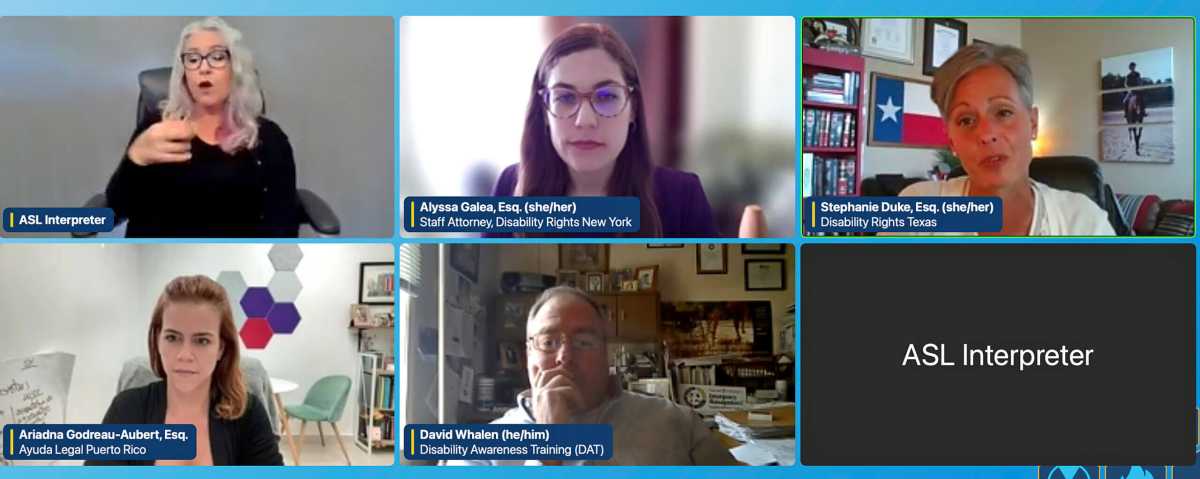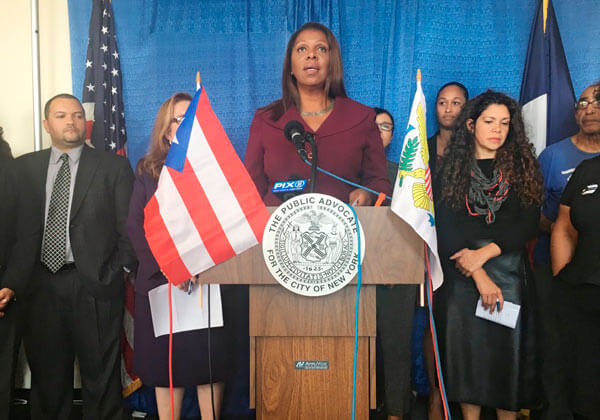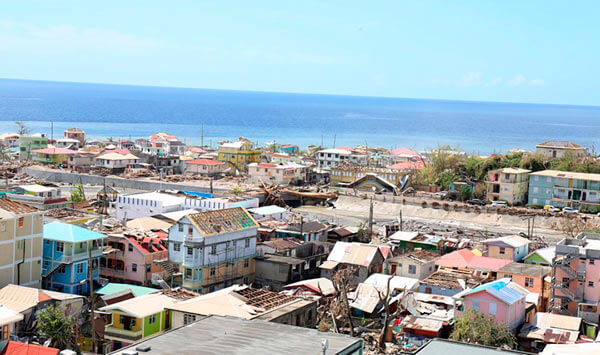Disability advocates and various experts discussed ways to ensure that the disability community is included in planning for weather emergencies during the 2023 Emergency Preparedness Conference held virtually from May 15 to 19. It was hosted by Disability Rights New York (DRNY).
On day one, the first panel was led by Stephanie Duke, Ariadna Godreau-Aubert and David Whelan. Duke is an attorney at Disability Rights Texas (DRTX). Godreau-Aubert is the founder and director of Ayuda Legal (Spanish for Legal Help) in Puerto Rico. Whelan is the project director of Disability Awareness Training (DAT) at Niagara University.
They shared some of their experiences with weather emergencies. Godreau-Aubert mentioned Hurricane Maria, which hit Puerto Rico in 2017 from Sept. 16 to Oct. 2. Five years later, Hurricane Fiona occurred last year from Sept. 14 to 28.
According to the May 2023 report released by the National Council on Disability (NCD),“The 20 events of 2021 caused at least 688 direct or indirect fatalities — the most disaster-related fatalities for the contiguous United States since 2011, and more than double 2020’s 262 deaths.”
The speakers placed emphasis on the fact that for many disabled people, when major weather and climate disasters happen, many can’t leave their homes due to inaccessibility, thus they stay and wait for the storms to end.
On day two, the first keynote address was given by Dr. Atyia Martin, who is the CEO and founder of All Aces Inc. In it, Martin, who is Black, discussed how climate change intersects with race, poverty and disability.
She highlighted that when it comes to weather and climate disasters, race encompasses both poverty and disability, based on who is affected the most.
“If it’s not your struggle, it’s invisible to you…unless it is made visible to you,” she said.
She added that the largest impact of a weather and climate disaster comes socially, as it includes impacts on the environment, the economy, infrastructure, and government.
On day three, the presentation was led by Whelan, as well as Laura Guidry-Grimes and Katie Savin. Guidry-Grimes is the associate staff ethicist at the Cleveland Clinic’s Center of Ethics. Savin is the associate professor in the social work division at California State University- Sacramento.
They discussed how to create inclusive and anti-ableist policies. Whelan began the presentation by defining anti-ableism and inclusion.
According to Whelan, inclusion means: “All people should freely, openly, and without pity accommodate any person with a disability without restrictions or limitations of any kind.”
Whelan also shared some of the things that disabled people may need when preparing for any weather and climate disaster, including “durable medical equipment, medication, adaptive equipment, assistive technology, and transportation.”
Guidry-Grimes continued the presentation, discussing foundations of crisis and standards of care. She pointed out how in normal conditions, there is more of an individual patient approach to decision-making. With this approach, there is fidelity to the individual patient, and respect for the rights and preferences of the patient.
She added that, in public health emergencies such as weather and climate disasters, there needs to be a shift to community-centered decision making. With this approach, there is promoting of public safety and protection of community health involved, as well as dwindling resources being fairly allocated.
On day four, the keynote address was given by Dr. Alina Engelman, who is an associate professor in the Department of Health at California State University-East Bay.
She discussed ways the disability community can maintain autonomy in disasters. Engelman co-wrote an article with Leyla Craig and Alastair Iles, published in October 2022 in the medical journal Health Affairs.
One thing to consider, they say, includes acknowledging the disabled and their intersectional identities in particular places and situations (people of color, women, refugees, seniors, or LGBTQIA+). “Disaster and climate managers need to think more creatively to appreciate how the effects of disasters and climate impacts may propagate across complex, diverse communities,” they say.
Another thing to consider is the fact that the disability community has been creative in regards to emergency response. “Large organizations, including UN agencies or the Red Cross, can benefit from more representation of disabled people with lived experiences of disasters and as refugees in humanitarian leadership capacities,” they added.
On the last day, the panel was led by Shaylin Sluzalis and Germán Parodi, who are co-directors of The Partnership for Inclusive Disaster Strategies, as well as Priya Penner. Penner is the executive assistant at the organization.
A key point they made in their presentation explained reasons why disabled people are institutionalized during disasters, the first one being the medical model of disability.
According to this model, disabled people are viewed as sick, and they need to be cured. If they can’t be cured, this model says they are best served by medical professionals or in separate medical settings.
The second reason why disabled people get institutionalized is a lack of appropriate planning. “Shelters are often not physically accessible, which force disabled people into physically accessible institutions,” they said.
In addition, “Local governments and non-governmental organizations do not have plans to ensure personal attendant services are provided in shelters,” they continued.
There are several ways to prevent institutionalization, they stated. One is creating inclusive disaster planning, response and recovery policies that not only include the rights and needs of disabled people, but also input from them.
Another is building relationships with local or state/territory emergency management/public health officials. The key for officials: “When hosting conversations around disasters and emergencies, invite them to attend and/or present.”
To stay updated on the work of DRNY, you can find their socials here: https://www.drny.org/index.php.


























